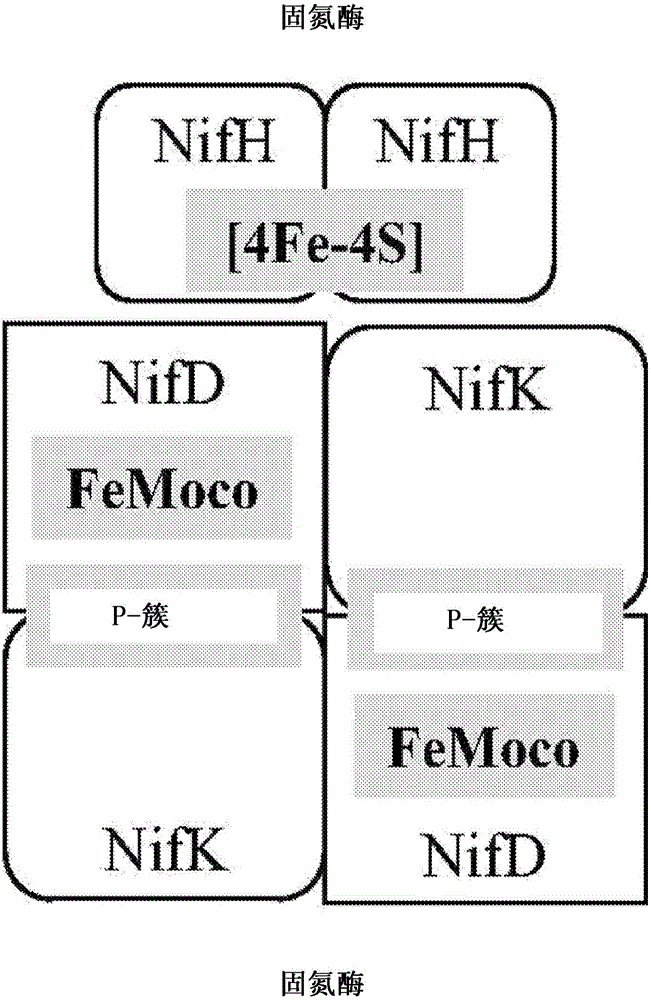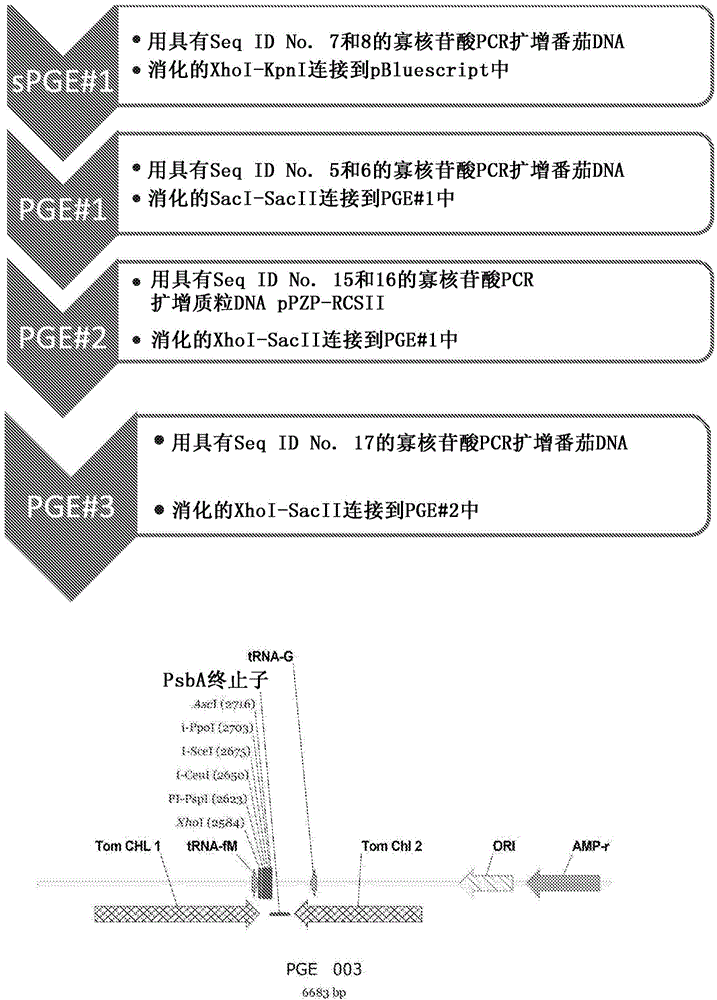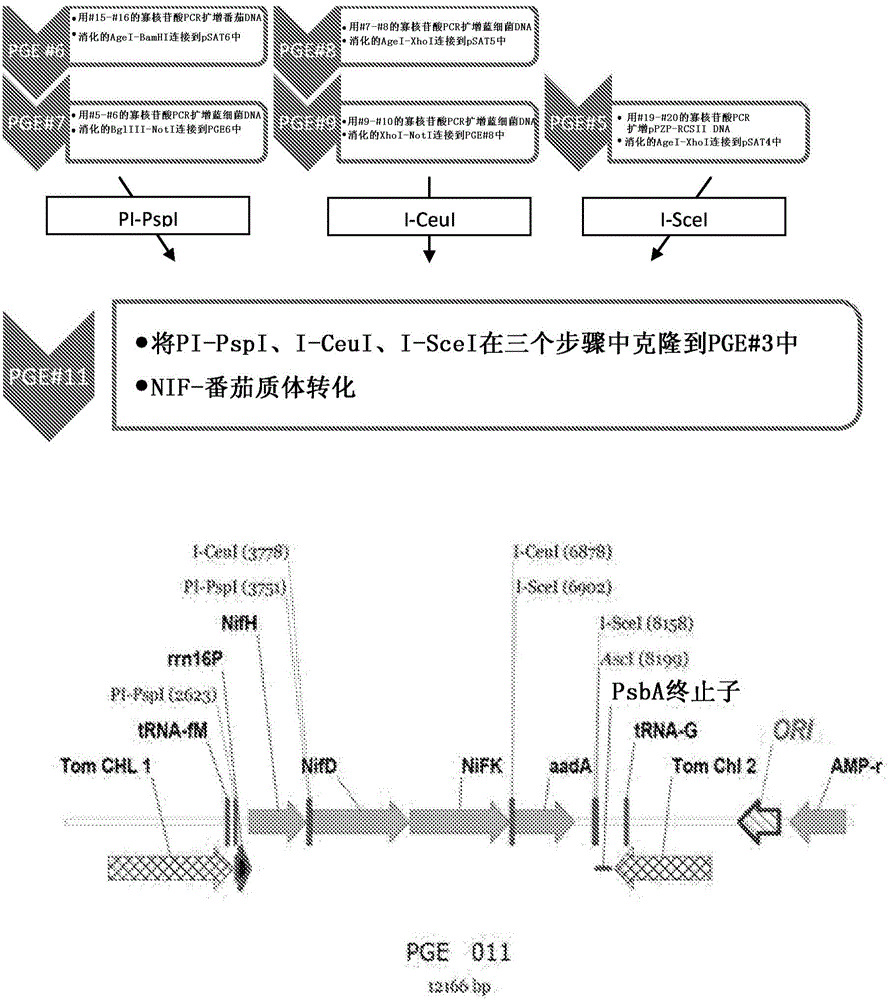Plant self nitrogen fixation by mimicking prokaryotic pathways
A nitrogen fixation and plant technology, applied in plant products, botany equipment and methods, angiosperms/flowering plants, etc., can solve problems such as failure
- Summary
- Abstract
- Description
- Claims
- Application Information
AI Technical Summary
Problems solved by technology
Method used
Image
Examples
Embodiment
[0060] Example: Generation of plasmids for tomato plastid transformation
[0061] In the present disclosure, ammonia and / or ammonium are produced in plants using prokaryotic or bacterial nitrogenase and BNF. These transgenic plants have the ability to meet all or part of their nitrogen requirements after transformation with a plasmid encoding BNF. Crops suitable for human consumption such as tomato, rice or wheat, as well as suitable horticultural plants such as flowers, grasses and trees, including other plants and algae, can also be transformed for auto / self nitrogen fixation. Since these plasmids do not exist in nature, synthetic biology was used to generate artificial plasmids capable of self / self nitrogen fixation by cells / plants. Said artificial plasmids contain modifications of the CDS and control sequences to perform new tasks such as expression and accumulation of nitrogenase in plants.
[0062] Example: Isolation of Genetic Material
PUM
| Property | Measurement | Unit |
|---|---|---|
| diameter | aaaaa | aaaaa |
Abstract
Description
Claims
Application Information
 Login to View More
Login to View More - R&D
- Intellectual Property
- Life Sciences
- Materials
- Tech Scout
- Unparalleled Data Quality
- Higher Quality Content
- 60% Fewer Hallucinations
Browse by: Latest US Patents, China's latest patents, Technical Efficacy Thesaurus, Application Domain, Technology Topic, Popular Technical Reports.
© 2025 PatSnap. All rights reserved.Legal|Privacy policy|Modern Slavery Act Transparency Statement|Sitemap|About US| Contact US: help@patsnap.com



